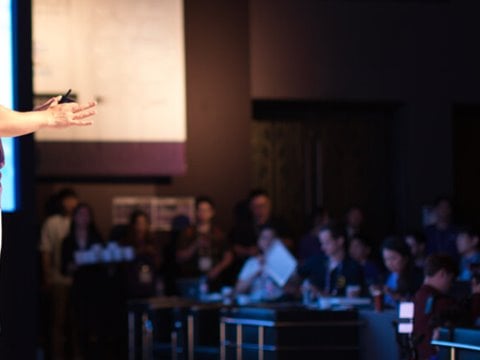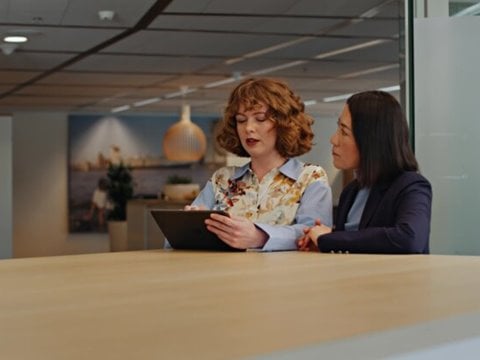
No need for a crystal ball – focus on the customer
Sometimes the future can appear blurry rather like in the movies when a character gazes into a hazy crystal ball. In business, the more complex and uncertain the future looks, the better it is to focus on business fundamentals. Above all, I urge that the focus be put squarely on the customer.
That said, in the chain of global logistics, defining the customer can sometimes be tricky. Within the whole supply chain, one can have multiple, in-between’ customer relationships: between shipping lines, separate ship owners, shipping line alliances, ports and terminals, other modes of transportation, warehousing services, etc.
In the long run, what matters is achieving satisfaction at the very end of the supply chain. Even if one’s own business is about serving intermediate needs somewhere along the logistics chain, the future looks brighter based on how well one focuses on creating clear value for the end customers. For both consumer and industrial businesses, the value of a logistics chain is only as good as the sum of its parts, which can be even greater if the customer receives clear added value with a superior match-up of the whole chain to their internal operations, for example.
“The value of the logistic chain is only as good as the sum of its parts.”
In the past years, there has been quite a lot of discussion of business model innovations. At the risk of being criticised by a handful of academics and business consultants, I will call their bluff here. Or rather, I’ll simplify things a bit. My argument is that no matter whether we are talking about an Uber, Amazon, Airbnb or Rolls-Royce’s Power-by-the-Hour model, the core of the “business model innovations” stems simply from focusing on the customer. Identifying customers’ true frustrations and problems and actively seeking alternative ways to solve them is vital.
Uber is not about a magical new seamless customer experience – it is about identifying and addressing the most common frustrations in using taxis. It actually hits a double jackpot by addressing many of the irritations of taxi-drivers, too.
Amazon’s CEO and company founder Jeff Bezos openly drives the company by putting the customer at the center of everything they do. Amazon cannot, however, be accused of modesty. The company’s mission statement is “to be the Earth’s most customer-centric company.” Interestingly, Amazon also hits the double jackpot in their approach. They foster customer–vendor relationships and step in to support their customers to help them solve problems with their vendors.
"Amazon’s mission statement is to “be Earth’s most customer-centric company."
Airbnb did it the hard way, but in the end, it touched on the most important problems in the traditional ways of booking travel lodging. They have worked a lot to find solutions to the key problem of trust between the parties in the Consumer-to-Consumer business. Again, a double jackpot approach – it is about both the trust of those who book accommodation and those who lease it.
Rolls-Royce’s power-by-the-hour model is often attributed to be a result of both copying a good business idea and pushing it through an effective marketing mill. After all, the model launch was as early as 1962. Similarly, engine health monitoring and on-board sensors in the CorporateCare@ version that was launched in 2002 have been discussed a lot. They are all good and important, but the key innovation is in recognising relevant customer problems.
In 2009, 45 of the world’s 50 leading airlines used Rolls-Royce engines. Combine this with the jungle of local aircraft maintenance companies and certified non-OEM parts, and it is easy to draw a picture from a global airline’s viewpoint. Security, predictability and known costs with a logical relation to revenues is suddenly not a bad value proposition. The Power-by-the-Hour model clearly addresses real customer issues by simplifying operations in this specific field of business.
What can we learn from all this? I believe that a focus on the customer is and will be the key. As the double jackpot cases show, looking at a wider ecosystem does no harm. The main elements in staying future-proof are to continuously listen to and understand the customer’s pressure points and systematically seek ways to relieve those pressures. In the changing world of global logistics, the customer’s frustrations and requirements also evolve – active listeners will have the advantage. Similarly, technologies, regulations and other business conditions will change. We can find new solutions even for old problems by actively exploring new avenues. .
How much could you gain by putting your customers at the heart of your business?
 |
Harri Happonen, D.Sc.(Tech.) Harri focuses on customer centric business development especially in the area of digital services. He has broad experience on building and facilitating value-creating networks with customers, partners, start-ups, universities and research institutes – on a mission to identify problems really worth solving and find the most value adding solutions.
|
Related articles
Subscribe and receive updates in your email
Subscribe













